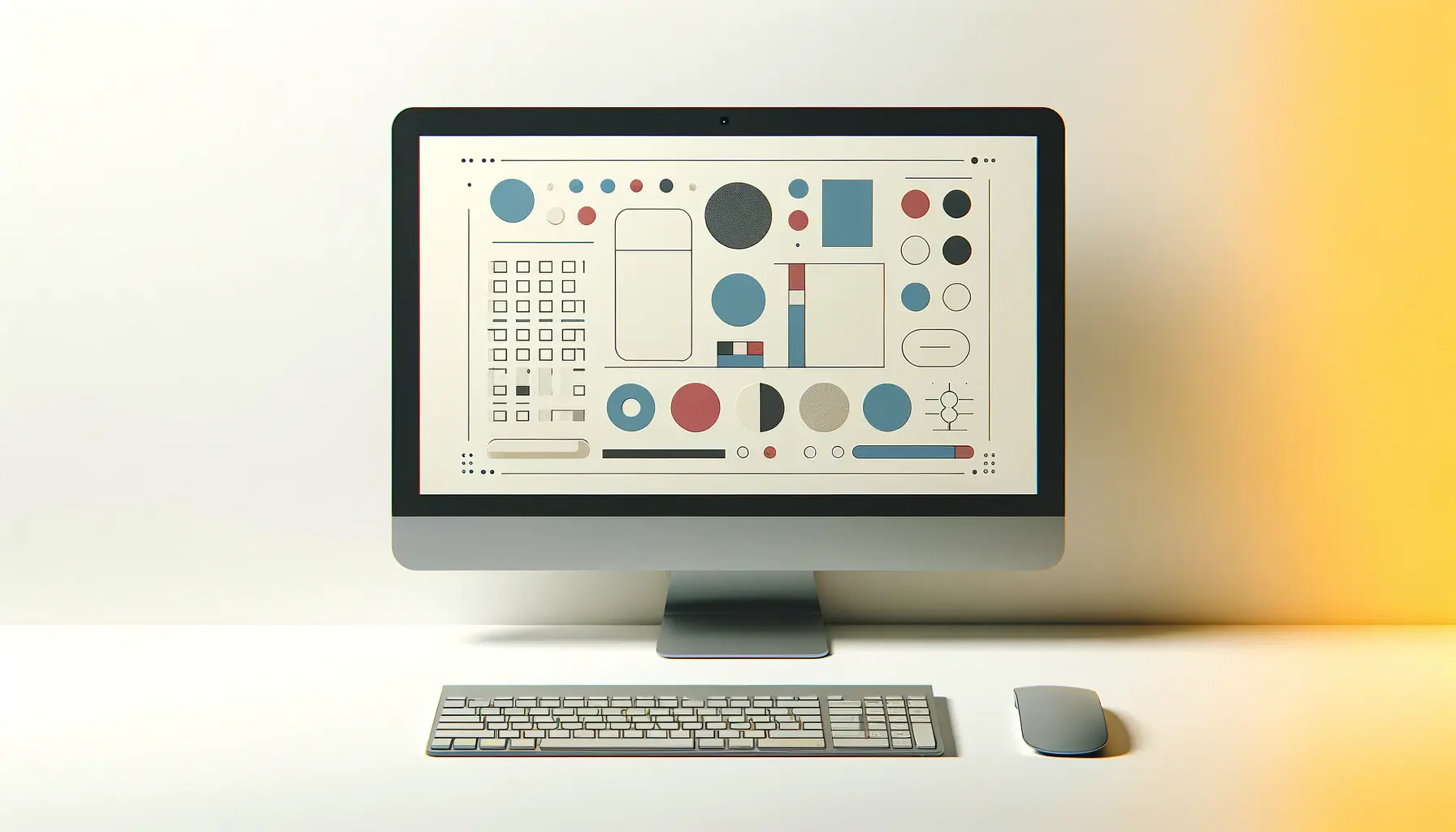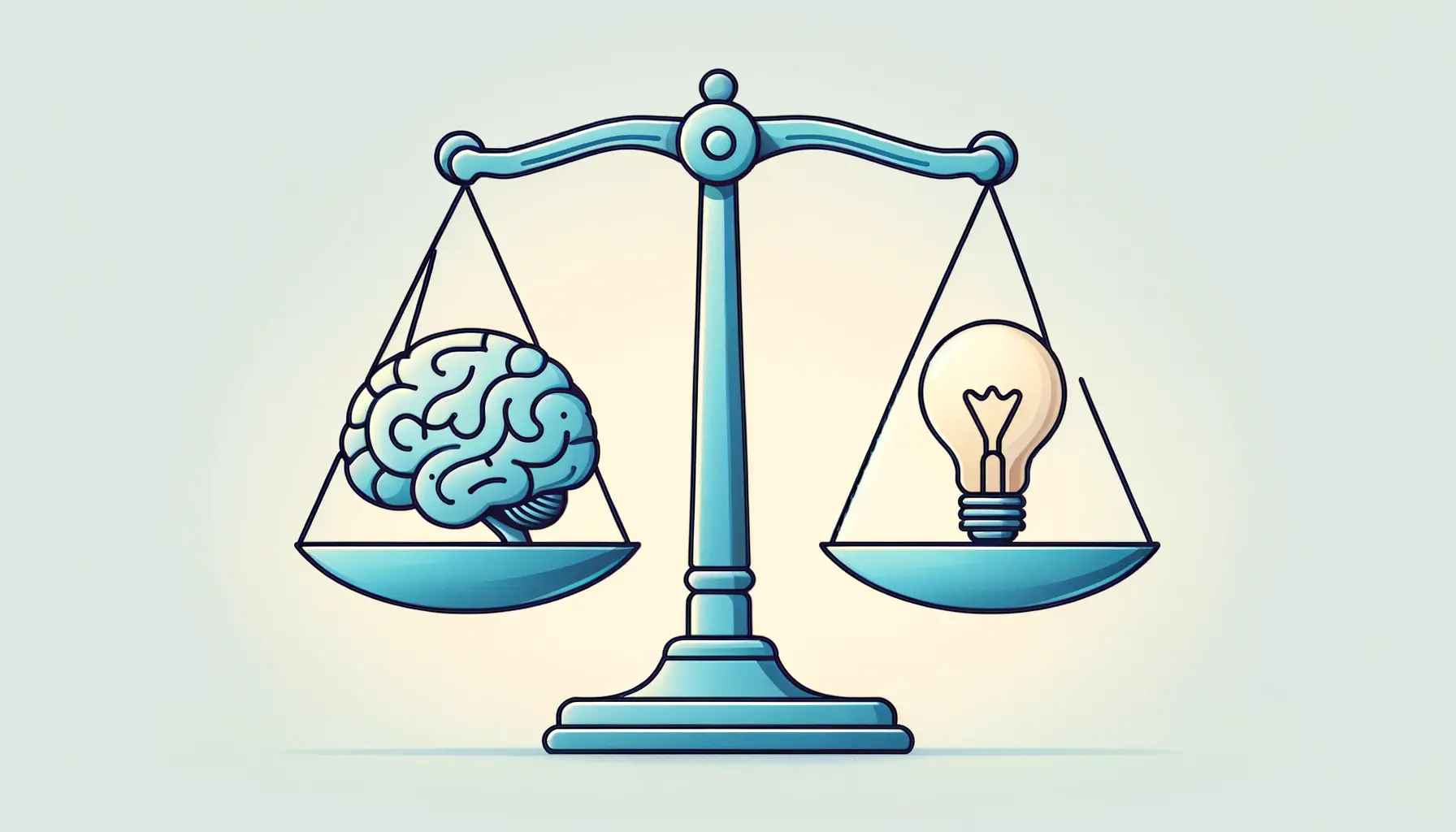In the digital age, the importance of web design extends far beyond aesthetics and functionality.
It embodies a profound ethical responsibility towards inclusion, ensuring that digital spaces are accessible to all, regardless of their abilities or backgrounds.
The concept of inclusion in web design is not just about adhering to legal standards or ticking off boxes in accessibility checklists.
It’s about fostering an online environment that welcomes everyone, making the internet a more democratic and equitable space.
This commitment to inclusion reflects a broader societal shift towards recognizing and valuing diversity in all its forms.
The ethics of inclusion in web design challenge us to rethink our approach to creating digital experiences.
It’s a call to action for designers, developers, and stakeholders to consider the wide array of human diversity — including but not limited to those with disabilities, the elderly, and those from different cultural backgrounds.
This holistic view of accessibility goes beyond technical adjustments, embedding inclusivity into the very fabric of the web development process.
By prioritizing ethical considerations in web design, we can create more meaningful, engaging, and universally accessible online experiences.
- Understanding Inclusion in Web Design
- The Role of Ethics in Web Design
- Challenges of Implementing Inclusive Design
- Best Practices for Inclusive Web Design
- Incorporating Inclusion from the Start
- Global Impact of Inclusive Web Design
- Future Trends in Inclusive Web Design
- Embracing the Future of Inclusion in Web Design
- Inclusion in Web Design FAQs
Understanding Inclusion in Web Design
Inclusion in web design is a multifaceted concept that encompasses a range of practices aimed at making websites accessible to as wide an audience as possible.
This involves designing websites in a way that people of all abilities and backgrounds can easily navigate, understand, and interact with them.
The goal is to remove barriers that may prevent interaction with, or access to, websites by people with disabilities, those using mobile devices, individuals in rural areas, and the elderly.
The principles of inclusive web design are rooted in the broader concept of universal design, which advocates for creating products and environments to be usable by all people, to the greatest extent possible, without the need for adaptation or specialized design.
In the context of web design, this means creating websites that are flexible and adaptable to different user needs and preferences, ensuring compatibility with a variety of assistive technologies, and providing content in formats that are accessible to everyone.
Key Components of Inclusive Design
At the heart of inclusive web design are several key components that guide the development process.
These include:
- Accessibility: Ensuring that websites can be used by people with disabilities, which encompasses visual, auditory, motor, and cognitive impairments.
- Usability: Designing websites that are intuitive and easy to use for everyone, including novice users or those with limited technical skills.
- Flexibility: Allowing users to customize their browsing experience to meet their individual needs and preferences.
Implementing these components requires a deep understanding of user needs, as well as a commitment to ongoing testing and improvement.
It’s not just about technical compliance with standards like the Web Content Accessibility Guidelines (WCAG); it’s about embracing a mindset that values diversity and seeks to create digital experiences that are genuinely inclusive.
Inclusion in web design is not just a technical challenge; it’s an ethical imperative that reflects our values as a society.
By prioritizing inclusion, web designers and developers can contribute to a more equitable and accessible digital world.
This approach not only benefits users with disabilities but also improves the overall user experience for everyone, demonstrating the universal value of designing with inclusivity in mind.
The Role of Ethics in Web Design
The intersection of ethics and web design is a critical area that demands attention from all digital creators.
Ethics in web design encompasses a broad spectrum of considerations, from user privacy and data protection to ensuring equitable access for all users.
At its core, ethical web design is about making conscious decisions that respect and uphold the dignity, rights, and welfare of all individuals who interact with digital products and services.
This ethical commitment challenges designers to consider the wider implications of their work, beyond mere compliance with legal requirements or industry standards.
One of the fundamental ethical considerations in web design is the commitment to accessibility.
This goes beyond the technical aspects of making websites usable by people with disabilities and touches on the moral obligation to ensure that digital spaces are open and accessible to everyone, regardless of their physical or cognitive abilities.
Ethical web design also involves protecting user privacy, ensuring that personal information is collected, stored, and used in a manner that respects user consent and preferences.
Privacy and Security in Inclusive Design
In an era where data breaches and privacy concerns are increasingly common, ethical web design must prioritize the security and privacy of user information.
This involves implementing robust security measures to protect against unauthorized access and ensuring that privacy settings are transparent and easily navigable for users.
Designers and developers must also be mindful of the ethical implications of using tracking technologies and personal data for analytics or advertising purposes, ensuring that users have clear choices and control over their own information.
Moreover, ethical web design requires a commitment to transparency and honesty in all aspects of the design process.
This includes being upfront about the use of cookies, the collection of personal data, and the purposes for which this information is used.
It also means providing users with clear, accessible information about how to manage their privacy settings and consent preferences.
Ethical web design is a continuous process of reflection, learning, and improvement, aiming to respect and protect the rights and dignity of all users.
Ultimately, the role of ethics in web design is to guide creators in making responsible decisions that enhance the digital experience for everyone.
By embedding ethical considerations into the design process, we can create more inclusive, respectful, and secure online environments.
This not only benefits users but also builds trust and credibility for brands and organizations in the digital landscape.
Challenges of Implementing Inclusive Design
While the benefits of inclusive web design are widely recognized, implementing it poses several challenges.
These obstacles range from technical issues to cultural and organizational barriers.
Understanding these challenges is the first step towards overcoming them and creating more accessible and inclusive digital experiences.
One of the primary challenges is the lack of awareness and understanding of accessibility issues.
Many web designers and developers are not fully informed about the needs of users with disabilities or how to accommodate these needs in their designs.
This gap in knowledge can lead to the creation of websites that are difficult or impossible for some people to use.
Technical and Resource Constraints
- Limited Knowledge: A significant barrier is the lack of expertise in accessible design principles among web professionals. This includes unfamiliarity with accessibility guidelines and best practices.
- Cost Implications: Organizations often perceive accessibility as an additional cost, not recognizing the long-term benefits and potential market expansion that inclusive design can bring.
- Complexity of Web Technologies: The rapid evolution of web technologies can make it challenging to maintain accessibility. New frameworks and design trends may not always prioritize or support inclusive practices.
Addressing these technical and resource constraints requires a concerted effort to educate and train web professionals in accessibility standards and inclusive design practices.
It also involves advocating for the integration of accessibility considerations into the early stages of the web development process, rather than treating them as an afterthought.
Cultural and Organizational Barriers
- Resistance to Change: Organizational cultures that are resistant to change can hinder the adoption of inclusive design practices. This resistance may stem from misconceptions about the cost or effort required to implement accessibility features.
- Lack of Inclusive Mindset: Without a culture that values diversity and inclusion, efforts to implement accessible design may not receive the support or resources they need to be successful.
- Insufficient User Engagement: Failing to engage with users with disabilities in the design process can lead to oversights and missed opportunities for enhancing accessibility.
Incorporating an inclusive mindset into organizational culture is crucial for overcoming barriers to accessible web design.
Overcoming these challenges requires a multifaceted approach that includes raising awareness, fostering an inclusive culture, and investing in training and resources.
By addressing these obstacles, organizations can unlock the full potential of the web as a platform for inclusion, equality, and diversity.
Best Practices for Inclusive Web Design
To effectively implement inclusive web design, it’s essential to follow best practices that ensure websites are accessible and usable for everyone.
These practices are not just about adhering to technical standards but also about adopting a user-centered design philosophy that prioritizes the needs and preferences of a diverse user base.
By integrating these practices into the web development process, designers and developers can create more inclusive digital experiences.
Understanding and applying these best practices is crucial for overcoming the challenges associated with inclusive web design.
They serve as a roadmap for creating digital content that is not only compliant with accessibility standards but also genuinely welcoming and usable for all users.
Focus on User Experience (UX)
- User Research: Conducting thorough user research that includes people with disabilities is crucial. This research should inform all stages of the design and development process.
- Usability Testing: Regular usability testing with a diverse group of users, including those with disabilities, ensures that accessibility considerations are effectively addressed.
- Feedback Loops: Establishing mechanisms for receiving and acting on feedback from users about accessibility issues is vital for continuous improvement.
Centering the user experience in web design not only enhances accessibility but also improves the overall quality and effectiveness of websites.
It leads to digital products that are more intuitive, engaging, and satisfying for all users.
Adherence to Accessibility Guidelines
- WCAG Compliance: Following the Web Content Accessibility Guidelines (WCAG) is a foundational aspect of inclusive web design. These guidelines provide a comprehensive framework for making digital content accessible.
- Responsive Design: Ensuring websites are responsive and adaptable to various devices and screen sizes is critical for accessibility, especially for users with mobility impairments or those using assistive technologies.
- Keyboard Navigation: Designing for keyboard-only navigation is essential for users who cannot use a mouse or touch screen due to physical disabilities.
Adhering to these guidelines and principles not only helps in meeting legal and ethical obligations but also enhances the user experience for a broader audience.
Inclusive web design is an ongoing commitment to accessibility, requiring continuous learning, testing, and adaptation.
Implementing these best practices is a step towards creating a more inclusive and equitable digital world.
It reflects a commitment to diversity, accessibility, and the belief that everyone deserves equal access to information and services on the web.
Incorporating Inclusion from the Start
One of the most effective strategies for achieving inclusive web design is to incorporate accessibility and inclusivity principles from the very beginning of the web development process.
This proactive approach ensures that inclusivity is not an afterthought but a fundamental aspect of design thinking and decision-making.
By embedding inclusion at the start, designers and developers can create more accessible and user-friendly websites, reducing the need for costly and time-consuming modifications later on.
Integrating inclusivity from the outset involves a shift in mindset and practice.
It requires teams to consider a wide range of user needs and preferences throughout the design and development lifecycle.
This approach not only leads to better outcomes for users but also promotes innovation and creativity by challenging designers to think broadly about usability and accessibility.
Strategies for Early Integration
- Accessibility Audits: Conducting accessibility audits during the initial phases of web development helps identify potential barriers and informs the design process.
- Inclusive User Personas: Creating user personas that represent a diverse range of abilities and backgrounds ensures that various user needs are considered from the start.
- Universal Design Principles: Applying universal design principles can guide the creation of websites that are accessible and usable by the widest possible audience.
These strategies highlight the importance of planning for inclusion from the beginning.
They serve as a foundation for developing websites that are inherently accessible, rather than attempting to retrofit accessibility features after the fact.
Benefits of Early Inclusion
- Cost Efficiency: Addressing accessibility and inclusivity early in the web development process can significantly reduce the costs associated with redesigning or modifying websites to meet accessibility standards later on.
- Broader Reach: Inclusive websites can reach a wider audience, including users with disabilities, older adults, and those using mobile devices, thereby expanding the potential user base.
- Enhanced User Satisfaction: Websites designed with inclusivity in mind tend to offer a better user experience for all visitors, leading to increased satisfaction and loyalty.
Early integration of inclusion principles is not just a best practice; it’s a strategic approach that benefits users, businesses, and the broader digital ecosystem.
By prioritizing inclusion from the start, web designers and developers can create digital experiences that truly reflect the diversity of the web’s user base.
This approach not only fulfills ethical and legal obligations but also enhances the overall quality and impact of digital products and services.
Global Impact of Inclusive Web Design
The global impact of inclusive web design is profound, extending far beyond individual websites to influence the broader digital landscape.
By embracing inclusivity, the web becomes a more equitable space, reflecting and accommodating the diversity of its global user base.
This shift towards inclusivity not only benefits users with disabilities but also supports social inclusion, economic participation, and the democratization of information and technology.
Inclusive web design plays a crucial role in breaking down barriers to information access, enabling people from all walks of life to participate fully in digital society.
This inclusivity fosters innovation, drives economic growth, and contributes to the creation of a more inclusive global community.
Enhancing Social Inclusion
- Empowerment: Accessible websites empower individuals with disabilities by providing equal access to information, services, and opportunities.
- Community Building: Inclusive web design supports the building of diverse online communities, encouraging participation and engagement from users worldwide.
- Representation: By considering the needs of a diverse user base, inclusive web design promotes representation and visibility for marginalized groups.
The impact on social inclusion is significant, as it enables individuals to engage with society on more equal terms, fostering a sense of belonging and community.
Driving Economic Participation
- Market Expansion: Inclusive web design opens up new markets by making digital content accessible to a wider audience, including the elderly and people with disabilities.
- Innovation: The challenges of designing for inclusivity can inspire innovation, leading to the development of new technologies and approaches that benefit all users.
- Competitive Advantage: Businesses that prioritize inclusive web design can differentiate themselves in the marketplace, appealing to a broader customer base and enhancing their brand reputation.
The economic benefits of inclusive web design are clear, with the potential to drive growth, innovation, and competitive advantage for businesses that embrace inclusivity.
The global impact of inclusive web design extends beyond individual users or websites, contributing to a more inclusive, equitable, and diverse digital world.
In conclusion, the global impact of inclusive web design is transformative, offering a pathway to a more accessible, equitable, and inclusive digital future.
By prioritizing inclusivity, the web can better serve as a platform for empowerment, participation, and innovation, reflecting the diversity and dynamism of its global user community.
Future Trends in Inclusive Web Design
The landscape of web design is continually evolving, with new technologies, standards, and user expectations shaping the future of inclusivity online.
As we look ahead, several key trends are emerging that promise to further enhance the accessibility and usability of the web for all users.
These trends not only reflect ongoing advancements in technology but also a growing recognition of the importance of designing digital experiences that are truly inclusive.
Understanding these trends is essential for web designers and developers seeking to stay at the forefront of creating accessible, user-friendly digital environments.
By anticipating and embracing these developments, professionals can ensure that their work continues to meet the diverse needs of the global web audience.
Artificial Intelligence and Automation
- Automated Accessibility Testing: AI-driven tools are becoming increasingly sophisticated, offering the ability to automatically identify and suggest fixes for accessibility issues in web design.
- Personalized User Experiences: AI can also be used to create more personalized web experiences, adapting content and interfaces to meet individual user needs and preferences, including those with disabilities.
The integration of AI and automation in web design not only streamlines the development process but also opens up new possibilities for creating dynamic, adaptable, and highly accessible digital experiences.
Advancements in Assistive Technologies
- Improved Screen Readers: Ongoing improvements in screen reader technology and other assistive devices are making the web more accessible to users with visual impairments.
- Gesture-Based Navigation: Innovations in gesture recognition and control are providing new ways for users with physical disabilities to interact with digital content.
These advancements in assistive technologies play a crucial role in enhancing accessibility, offering more intuitive and effective ways for all users to navigate and engage with the web.
Inclusive Design as Standard Practice
- Global Accessibility Standards: There is a growing movement towards the adoption of global accessibility standards, making inclusive design a baseline expectation for all web development.
- Increased Awareness and Training: As awareness of the importance of accessibility grows, we can expect to see more comprehensive training and resources for web professionals, embedding inclusive design principles into the core of web development education and practice.
The future of inclusive web design is bright, with emerging technologies and trends offering new opportunities to create digital experiences that are accessible, engaging, and empowering for all users.
As we move forward, the commitment to inclusive web design will continue to shape the digital landscape, ensuring that the web remains a space that is open, accessible, and welcoming to everyone.
The trends highlighted here represent just a few of the ways in which inclusivity is becoming an integral part of the web’s future, promising a more accessible and user-friendly digital world for generations to come.
Embracing the Future of Inclusion in Web Design
The journey towards creating a more inclusive digital world is ongoing, with the ethics of inclusion in web design playing a pivotal role in shaping accessible and equitable online spaces.
As we have explored, the commitment to inclusivity is not just a technical requirement but a moral imperative that reflects our values and aspirations as a society.
The future of web design is intrinsically linked to our ability to embrace diversity, ensure accessibility, and foster an environment where everyone can participate fully and freely.
The Path Forward
As we look to the future, it’s clear that the principles of inclusive web design will continue to evolve, driven by technological advancements, changing user needs, and a deeper understanding of what it means to be truly inclusive.
The integration of artificial intelligence, advancements in assistive technologies, and a global movement towards standardized accessibility practices are just a few of the trends that promise to enhance the inclusivity of the web.
These developments offer exciting opportunities to create digital experiences that are more accessible, personalized, and empowering for all users.
Creating a Culture of Inclusion
At the heart of these efforts is the need to cultivate a culture of inclusion within the web design and development community.
This involves not only equipping professionals with the skills and knowledge to implement inclusive design practices but also fostering an ethos that values diversity and accessibility at every level.
By making inclusion a core part of the design process, we can ensure that the web remains a space that is open and accessible to everyone, regardless of their abilities or backgrounds.
- Continued education and training in accessibility standards and inclusive design principles.
- Greater collaboration and engagement with users with disabilities to understand their needs and preferences.
- Adoption of emerging technologies and practices that enhance accessibility and user experience.
In conclusion, the ethics of inclusion in web design challenge us to create digital experiences that are not only accessible and usable but also respectful and empowering.
By embracing these principles, we can build a web that truly reflects the diversity of its users, offering equal opportunities for participation, engagement, and innovation.
The future of web design is inclusive, and by working together, we can make this vision a reality.
Quality web design is key for a great website! Check out our service page to partner with an expert web design agency.
Inclusion in Web Design FAQs
Explore common questions about the ethics and implementation of inclusion in web design.
Ethical design prioritizes creating web experiences that are accessible, usable, and inclusive for all users, regardless of their abilities or backgrounds.
Inclusive web design ensures that everyone has equal access to information and services online, enhancing usability and user satisfaction for a diverse audience.
Inclusive design improves website accessibility, which can positively impact SEO by making content more discoverable and usable for all users.
Key components include accessibility, usability, flexibility, and adaptability to meet the diverse needs of users with different abilities.
Yes, inclusive design can expand market reach, enhance brand reputation, and drive innovation by catering to a wider, more diverse audience.
Designers can implement inclusivity by following accessibility guidelines, engaging with diverse user groups, and incorporating feedback into the design process.
Challenges include a lack of awareness, technical and resource constraints, and the need for ongoing education and advocacy for accessibility.
Emerging trends include the use of AI for personalized experiences, advancements in assistive technologies, and a global movement towards standardized accessibility practices.














